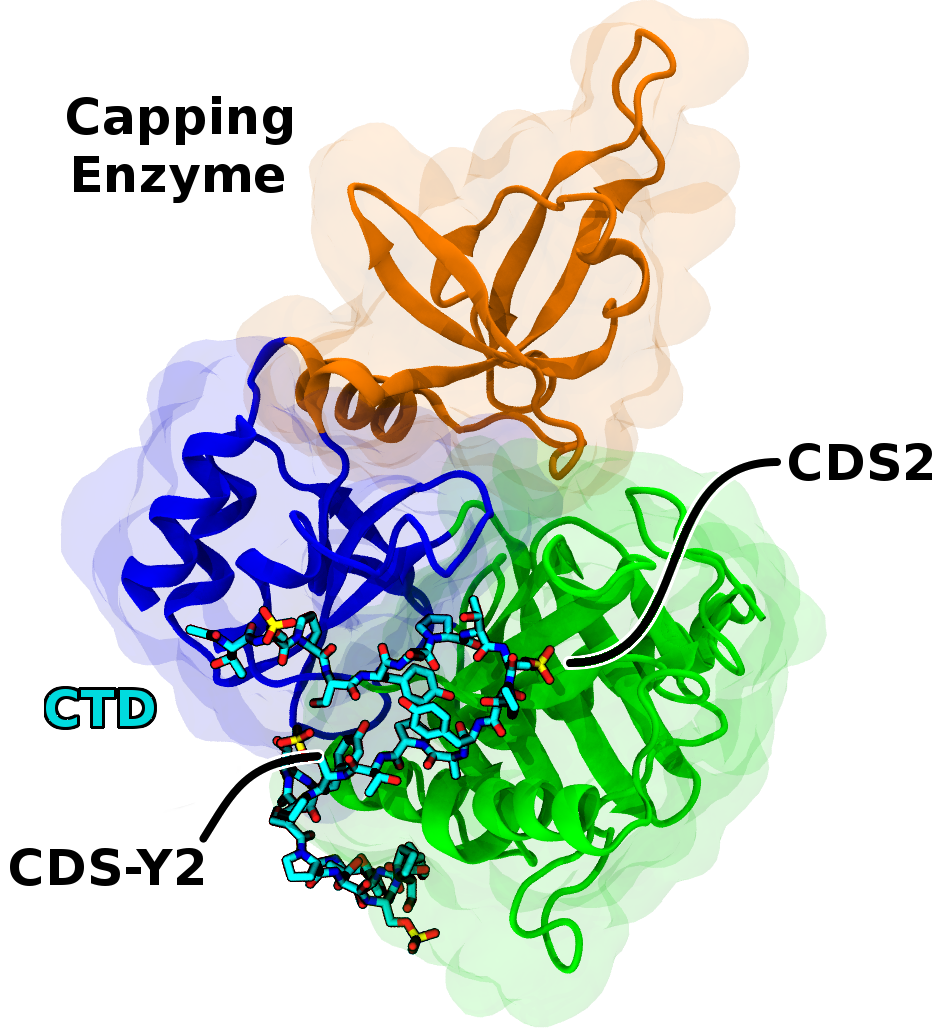News
Mechanism that controls mRNA capping in gene regulation identified by Dundee interdisciplinary collaboration
Published on 16 March 2021
Researchers at the University of Dundee have identified novel interaction sites on the mRNA Capping Enzyme that are essential for its activity.

The results, which have implications for how gene expression is regulated in human cells and could lead to new treatment strategies for diseases such as cancer, are published in the journal Nucleic Acids Research.
mRNA ‘capping’ is a critical process required for efficient gene expression and regulation in human cells. The process is tightly regulated by the C-terminal Domain (CTD) of RNA Polymerase II, which recruits the mRNA Capping Enzyme to the site of transcription and increases its activity. In the new study, large-scale computer simulations were performed to reveal the interaction between the Capping Enzyme and the CTD. These simulations led to the identification of multiple interaction sites on the mRNA capping enzyme and showed, for the first time, a plausible mechanism to explain how the CTD activates the Capping Enzyme.
The research is another milestone in a long-standing collaboration between the groups of Andrei Pisliakov (Physics & Computational Biology) and Victoria Cowling (Gene Regulation & Expression). In the current Medical Research Council study computational predictions are confirmed and built upon through the use of biochemical experiments.
PhD student Marcus Bage, first author in the study said, "Our simulations of the Capping Enzyme shed light on how such an important enzyme in gene expression is coordinated during the process of transcription. After making some detailed predictions about the nature of this regulation we were able to prove that the same behaviour could be reproduced using biochemical experiments. Altogether this contributes significantly to our understanding of the regulatory mechanisms of gene expression. The School of Life Sciences has been a fantastic environment to perform such interdisciplinary research, providing the culture and resources to foster successful collaborations."
Therapeutic approaches which impact on gene readers, such as the capping enzymes, are currently being intensively investigated. The work from this study will contribute to the understanding of gene readers and may assist the design and development of new clinical strategies.
The paper, 'A novel RNA Pol II CTD interaction site on the mRNA Capping Enzyme is essential for its allosteric activation' can be read online.

Image: The Capping Enzyme is recruited to the site of transcription by the CTD. The new research identifies novel CTD interaction sites on the Capping Enzyme that are essential for its recruitment and allosteric activation.
Press Office, University of Dundee
press@dundee.ac.uk